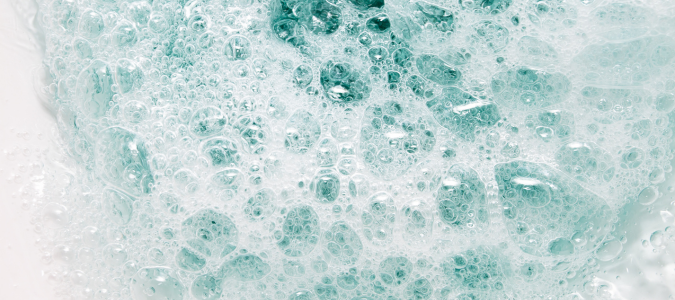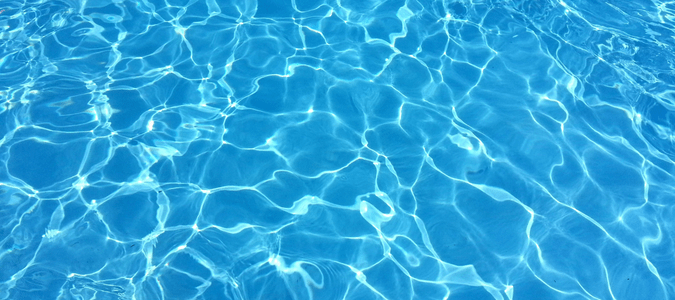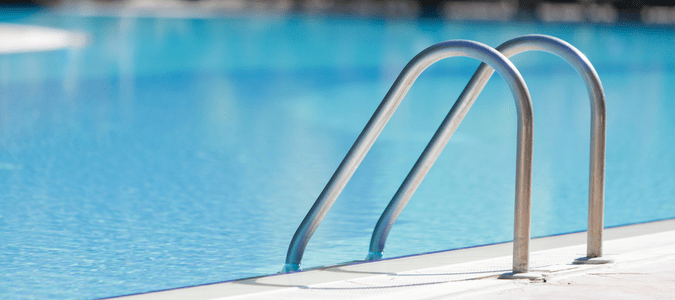Foamy water is good when you’re relaxing in your bathtub. But it’s not something you want to see in your pool. Foamy pool water can happen overnight, which can alarm homeowners who want to take a morning dip. Normally, foam comes from phosphates that have gotten into the water. Unlike bath bubbles, pool foam is dense and doesn’t pop when you touch it. That’s because it’s organic material, not air.
The organic material oversaturates the water, explaining why it won’t dissolve. That results in a cloudy-looking pool. You don’t have to worry too much because it won’t harm you. But it does make your pool look less than desirable, and your swimming experience won’t be as enjoyable.
There are some methods you can try to fix this issue, but it’s best to contact pool technicians. They will clear up your foamy pool water so you can return to your swimming routine.
Why Is Your Pool Water Foamy?
Organic matter buildup is the most common culprit behind foamy pool water. But how do natural materials end up in your pool? Here are some explanations behind this puzzling occurrence.
Water Imbalance
Your pool’s total alkalinity and pH level must always be in check. If there’s an extreme imbalance, the products in your pool can’t function effectively. That will encourage organic material to collect in your pool and cause unsightly foaming. Total alkalinity should be between 80 and 120 parts per million (ppm), while pH levels should be 7.4 to 7.6. Check the pool’s water balance to see what the numbers are.
Homeowners must also keep an eye on their pool’s calcium hardness level. When it gets low, the pool water will turn soft and foam up when too many people use it. The ideal calcium hardness range is 200 to 400 ppm. A quality calcium hardness product is the answer to your problems.
Algaecide Issues
Maintaining a pool is expensive, so many homeowners try to save by buying cheaper algaecide. But that can lead to more costly issues later on. Low-quality algaecide is less effective, causing organic matter to build up and your pool to turn foamy. Spare yourself the headache by investing in high-quality pool chemicals or by hiring a pool specialist.
Before applying algaecide, read the instructions to determine the correct amount for your pool. Using too much treatment can also turn your pool frothy. The good news is that algaecide-related foam usually disappears on its own. You can wait it out or skim the foamy surface for faster results.
Technical Malfunction
Chemical imbalances are the usual cause of foamy swimming pools. But, if you are diligent with keeping chemical levels in check, it might be a technical issue. There could be an air leak in the pump system, causing bubbles to rise to the pool’s surface.
Having too little water in your pool can cause air leaks. If the pool skimmer is submerged less than halfway in the water, it’ll suck up too much air. But if there’s enough water in your pool, there could be something wrong with the pump’s inner workings. A professional can look into it.
A foamy pool can be a sign of an underlying problem. If you’ve tried all sorts of chemical pool cleaners and treatments to no avail, it’s time to call in a pro. A pool care specialist will identify the root of the problem and provide the best solution. You’ll soon have a crystal clear pool again.
What Is Pool Calcium Hardness and Why Is It Important?
Calcium and pools may seem completely unrelated, but you’d be surprised. The correct level of calcium is essential to your pool water’s health. The ideal calcium hardness for pools is 200 to 400 ppm. Going below or above this range can have unpleasant effects on the water and can cause the pool’s plaster to deteriorate.
Calcium hardness above 400 ppm results in a cloudy pool. It’s not something you want guests to see. The excess calcium will precipitate out, causing that murky look. While it’s not initially a cause for concern, don’t let the issue go unaddressed. Long-term calcium precipitation will cause scaling. The calcium will stick to the pool’s walls and other components in contact with the water.
In addition, the plumbing and pump will suffer and become inefficient over time. That means higher utility bills for you. You’ll also have to replace your pool equipment sooner because high calcium hardness shortens its life span. The best solution is to drain your pool and refill it with fresh water, ensuring all chemicals are balanced.
Low calcium hardness isn’t good for your pool, either. If it goes below 150 ppm, your pool water will become corrosive. It will eat away at the tiles and plaster, leaving blemishes on your pool’s masonry. That’s money down the drain. Metal parts aren’t safe, either. Low calcium hardness lowers the water’s alkalinity, damaging the pool railing and mechanical parts.
What’s tricky is that low calcium hardness is hard to detect with the naked eye. Instead of getting cloudy, the pool will be sparkling clean. That may not sound bad, but the water’s secretly unleashing destruction. You can add calcium chloride to your pool to raise the calcium hardness but do so carefully. Adding too much can send the calcium level through the roof.
Achieving the right level of calcium hardness can be complicated. If you’d rather not worry about it, let the pros take over. Pool technicians can tell if your pool is balanced and will perform the necessary treatments if not.
How Long Does It Take for Algaecide to Work?
What’s worse than foamy pool water? Green and slimy pool water. It probably means your pool has an algae infestation or bacterial contamination and needs algaeecide as soon as possible.
Algaecide is a chemical treatment that destroys algae and prevents future problems. So, how long before you can swim safely in your pool again? Algaecide only needs a few hours to work, but you might have to wait a day or two if you have a more severe algae problem.
Algaecide requires precise measuring, so don’t dump in the entire bottle. You should consider the size of your pool, the extent of the algae infestation and the type of algaecide you’re using. The general rule is to use 1 ppm of algaecide for every 10,000 gallons of water. But you might have to add a bit more if there’s a lot of algae thriving in your pool.
Algaecide is only effective with proper usage. If you don’t want to risk making a mistake, let a pool care specialist handle it. Here are some steps needed to return your pool to its former glory.
Determine the Correct Algaecide Type and Dosage
There are three types of algaecides, and you must choose depending on the type of algae that’s infesting your pool. Your pool care specialist will know the right type and dosage for your pool problem.
If using quats, the pool care specialist will pour it around the pool’s perimeter. It won’t kill the algae, but it will prevent new growth. It’s the most affordable type of algaecide. If you have a severe case, the pool technician might use poly-quats. It will kill the algae and have a longer-lasting effect. They’re usually more expensive, though.
For the best results, the pool care specialist might opt for a copper-based algaecide. Not only will it destroy the existing algae, but it will also deter future growths. The specialist will dissolve it in the water and pour some around the pool’s edges.
Clean and Balance the Pool
Algaecide is most effective when applied to a clean and balanced pool. Your pool care specialist will scrub the pool’s floor and walls to free them of grime. The pool chemistry will also be tested to bring the pH, calcium hardness and other elements to the correct balance.
Do a Follow-Up Treatment
Your pool care specialist will vacuum the pool 24 hours after the first round of algaecide application. That will take out any dead algae hanging around. If they spot any live algae, they’ll go in with another dose of algaecide. You can ask them to return for regular maintenance to keep your pool pristine.
Let the Pros Handle Your Pool Problems
It’s nice to have a swimming pool at home. But many homeowners aren’t prepared for the amount of work and money that goes into maintaining one. If your pool is stressing you out, turn to the pros for help. Pool care specialists know how to deal with chemical imbalances, get rid of algae infestations and other pool issues.
ABC Can Keep Your Pool Clean
Contacting a professional pool cleaning is the best way to eliminate any type of algae in your pool and prevent it from coming back. You can try to get rid of it on your own, but it demands more time and effort than many homeowners have. ABC Home & Commercial Services pool professionals can effectively remove algae and figure out the root causes of algae and other pool water issues. Save yourself time and hassle by contacting us when algae in your pool becomes a problem.



